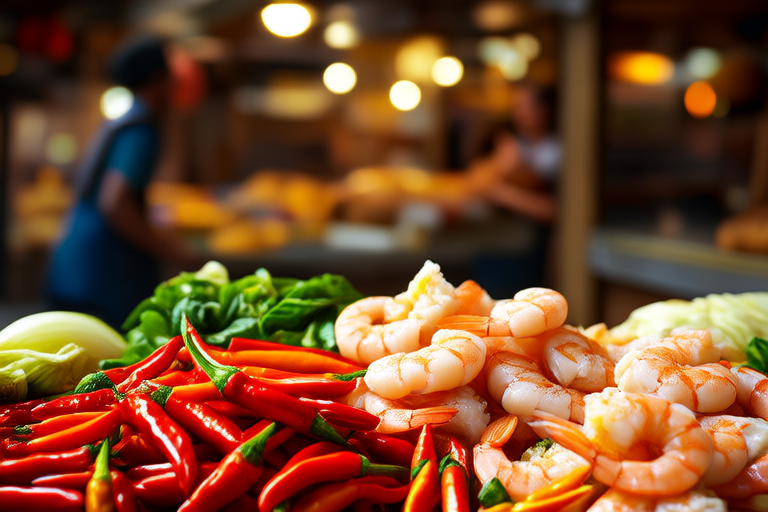From Market to Table: Exploring Local Cuisine Globally

From Market to Table: Exploring Local Cuisine Globally
Introduction
Local markets are the heartbeats of communities, where vibrant colors, rich aromas, and bustling energy converge to shape regional cuisines. These markets serve as the cornerstone of culinary exploration, offering travelers an immersive experience that goes beyond sightseeing. Each market is a testament to the unique blend of geography, climate, and cultural heritage that defines a region’s culinary identity.
Exploring local cuisine is more than just tasting new foods; it’s a deep dive into the soul of a place. From the bustling streets of Tokyo to the charming squares of Florence, markets provide a window into the daily lives of locals. They offer a glimpse into the ingredients that make up the backbone of traditional dishes, allowing visitors to appreciate the craftsmanship behind every meal.
The concept of “from market to table” encapsulates this journey. It highlights the direct relationship between the freshest ingredients and the meals that grace dining tables. Understanding this process is key to unlocking the authentic flavors that define a destination.
Markets Around the World
La Boqueria in Barcelona is one of the most iconic markets in Europe. Spanning several blocks, this market offers a dazzling array of fresh produce, cheeses, meats, and seafood. The stalls are a testament to the region’s culinary richness, with each vendor showcasing their best offerings. Visitors often marvel at the artistry displayed in arranging fruits and vegetables, while the air is filled with the aroma of freshly baked bread and roasting sausages.
Tsukiji Outer Market in Tokyo, on the other hand, is a world unto itself. Known for its tuna auctions, this market is a sensory overload for food enthusiasts. Rows of stalls offer everything from sushi-grade fish to delicate sweets. Travelers frequently share stories of standing in line for hours to taste the freshest sushi or savoring the first bite of a perfectly grilled eel. The market is not just a place to shop but also a place to witness the dedication and skill of local artisans.
Mercato Centrale in Florence is another gem. This indoor market is a treasure trove of Italian specialties. From truffles to balsamic vinegar, the market showcases the finest products of Tuscany. Visitors often recount their experiences of bargaining for truffle-infused oils or selecting the perfect bottle of wine to pair with their evening meal. The market is a microcosm of Italian culinary excellence, reflecting the region’s long-standing traditions and expertise.
Traditional Cooking Methods and Ingredients
Cooking methods vary widely across regions, each contributing to the distinct flavors of local cuisines. In Japan, the art of grilling, known as yakiniku, allows diners to enjoy perfectly charred meats. The technique requires precision and patience, ensuring that each piece of meat is cooked to perfection. Wasabi, a staple in Japanese cuisine, adds a fiery kick to dishes, balancing the richness of fatty cuts of fish.
In contrast, the Italian tradition of slow-cooking, such as braising and stewing, transforms tough cuts of meat into tender, flavorful dishes. Truffles, a prized ingredient in Italian cuisine, add an earthy depth to pasta sauces and risottos. The careful handling and integration of these ingredients exemplify the attention to detail that defines Italian cooking.
Other regions have their unique methods too. In India, the use of tandoor ovens imparts a smoky flavor to meats and breads. Fermentation plays a significant role in many cuisines, enhancing flavors and extending shelf life. For instance, kimchi in Korea and miso in Japan are both fermented products that are integral to their respective cuisines.